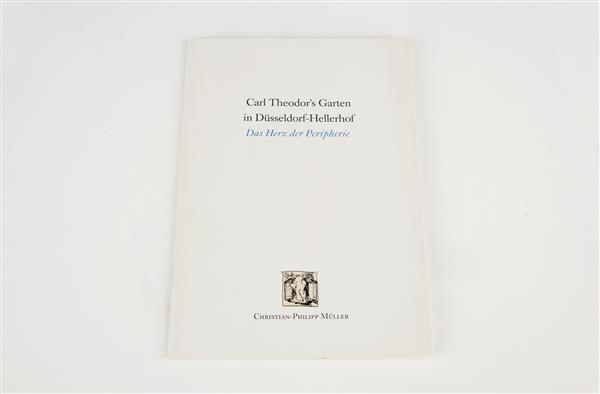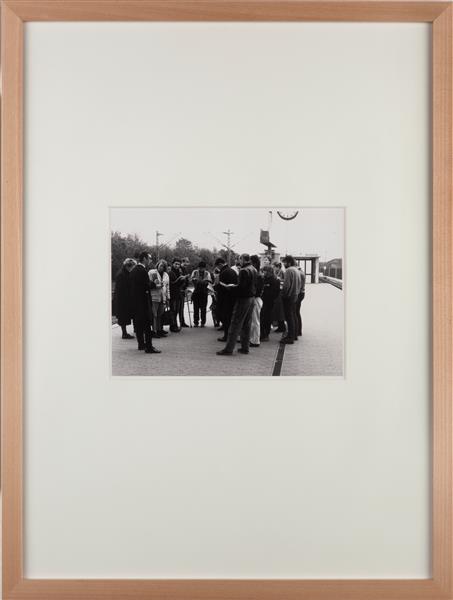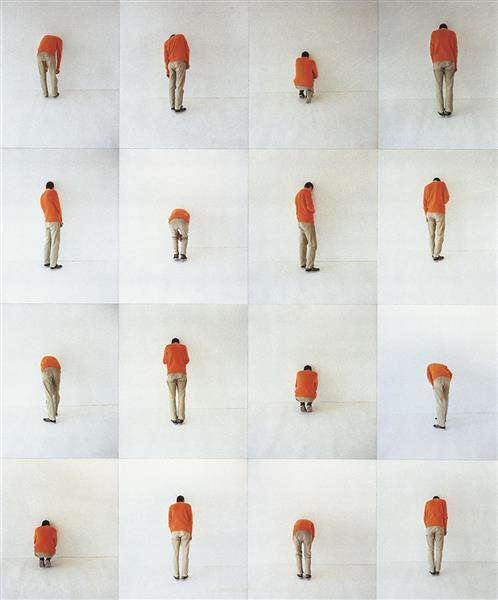Führer zur Performance von 1986 (Carl Theodors Garten in Düsseldorf-Hellerhof)
Christian Philipp Müller
21 × 14.8 cm
1986
Acquisition 2009
Inv. No. 0189
With Carl Theodors Garten in Düsseldorf-Hellerhof, the evn collection possesses an early work by the Swiss artist Christian Philipp Müller which is extraordinarily important for a contemporary revision of historical Conceptual Art. The work, which is not only concerned with a physical space, but its cultural, economic and political implications, is characterized by processuality and an extended understanding of site-specificity.
The gardens planned by Prince-Elector Charles Theodore in today’s Hellerhof neighborhood in Düsseldorf in 1755, yet finally realized some kilometers north in Benrath, provide the subject for the work developed by Müller as a student at the Düsseldorf Academy of Art. One might describe it as a montage with temporary territorial markings the artist left in the course of the tours he offered through the housing development, which was under construction at that time. Müller had meticulously studied the planning process of the “summer residence in the form of a hermitage” and transferred the layout by Nicolas de Pigage (1723–1796) to the originally considered location. Establishing a connection between past and present, he positioned some colleagues covered with sheets as monuments to representatives of the Enlightenment like Rousseau and Montesquieu along the route. The living sculptures recited texts by the thinkers they represented. Wearing a tweed jacket and a bow tie, Müller played the tourist guide, presenting the most beautiful spots of the grounds to his public, among them his colleagues Andreas Siekmann and Andreas Gursky from the academy. He told them about the gardens’ waterworks and bacchanalian pastorals and spread an erotic rumor concerning Voltaire and the Prince-Elector. Relying on official gazettes and local newspapers, Müller invited people to join his tours and to come to a concert with works by the court composer Johann Stamitz he had organized at a bus stop. He also discussed the installation of a panel showing the plan of the Prince-Elector’s gardens with the city’s authorities.
Carl Theodors Garten in Düsseldorf-Hellerhof operates at that interface of contemporary art where performative self-presentations and a contextually and politically oriented critical practice replace the traditional form of studio production. As a manifest work, Müller’s study comprises nineteen black-and-white vintage photographs, an enamel board, and a 32-page program booklet.
Brigitte Huck, 2011 (translation: Wolfgang Astelbauer)
Continue readingPublications
evn collection. 2006–2011, Cologne 2011, p. 270–283



